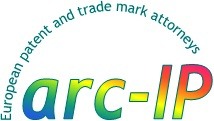Trademarks
Trademarks
A trade mark is a sign that distinguishes your products from similar products of your competitors. It may be the name of your company, the brand name of your products, a logo or a form of packaging. It allows others to easily recognise your products. It is the focus of your commercial reputation: your customers will associate your trade mark with your level of quality, value and service. It serves as an “indication of origin”.
Before using a new trade mark…
Before finalising your plans for a new trade mark, you should search for existing identical or similar registered trade marks to see if the mark is available for you to use.
The risks of not conducting trade mark searches include:
- unwittingly infringing somebody else’s registered trade mark (ignorance is no defense!)
- being liable for damages and legal costs
- being forced to change your trade mark and having to explain the change to your customers, having to start again in building up your reputation with a new trade mark, having to throw away all of your brochures and packaging using the old mark and having to reprint all of your brochures and packaging.
As trade mark rights exist country by country, you should also think about conducting searches before using one of your established trade marks in a new country.
A search on the internet may be useful as a start but is not sufficient; ARC-IP can conduct a search for you on the appropriate trade mark registers.
Why register your trade mark?
A trade mark can be used without being registered but there is a great advantage in having a registered trade mark.
What will you do if others copy your trade mark or use a similar trade mark that could be confused with yours? This could reduce your sales, damage your reputation (the copies may be poor quality and your customers may think they are getting “genuine” products) and destroy the value that is associated with your brand.
A registered trade mark gives you:
- the right to prevent unauthorised use of the mark (or confusingly similar marks) in the country of registration in relation to the registered goods
- a basis for showing that you have the right to use the mark for the registered goods in the country of registration and that nobody can stop you
- a basis for licensing your mark if you wish to
- a basis for estimating the value of your brand (e.g. for your accounts or for estimating the value of your company)
These rights can be kept in force forever by paying the necessary renewal fees (generally every ten years). However, registered trade marks only protect marks that are actually used. If a registered trade mark is not used during a 5-years period it may be attacked and cancelled.
Trade marks must be registered in the countries in which you want to have rights e.g. Benelux, European Union, France, UK, US,… International registrations can be used to secure trade mark rights in various countries.
Not all signs can be registered as trade marks…
In addition to the requirement of being available, i.e. not conflicting with prior rights of third parties, a registered trade mark must be distinctive.
Since a trade mark is a sign which distinguishes a company’s goods, a sign which is unable to do this can not be a registered trademark. Therefore, a sign which is too descriptive, i.e. which could be used to designate the product’s characteristics, can not be a registered trade mark.
Links
Trade marks and designs registration Office of the European Union (EUIPO) https://euipo.europa.eu
World Intellectual Property Organization http://www.wipo.int
Belgian Intellectual Property Office https://economie.fgov.be
UK Intellectual Property Office https://www.ipo.gov.uk
